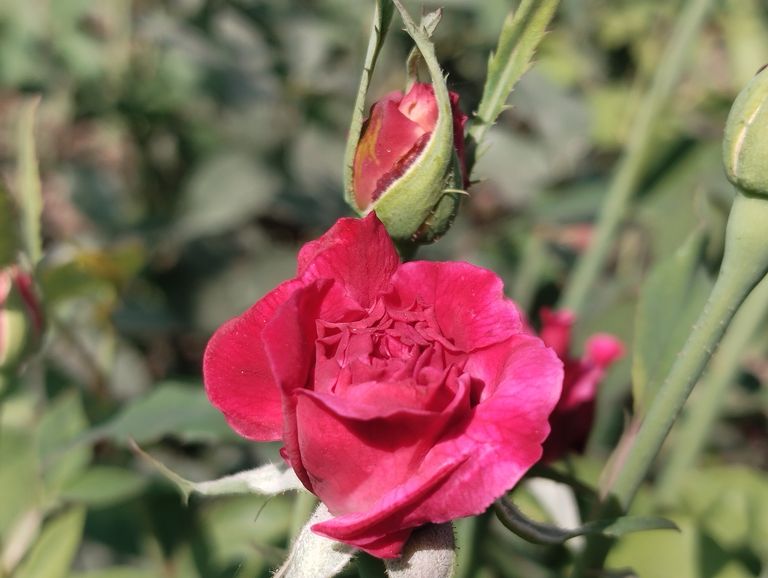
Rose Cultivation A Complete Guide to Growing Beautiful Roses.
Roses are one of the most popular and beautiful flowers in the world, admired for their fragrance, elegance, and variety of colors. Whether you are a hobby gardener or a commercial grower, cultivating roses can be a rewarding experience. In this blog, we will discuss everything you need to know about rose cultivation, including soil preparation, planting techniques, maintenance, pest control, and harvesting.
- Choosing the Right Rose Variety
Before starting rose cultivation, it's essential to choose the right variety based on your climate, soil type, and purpose (ornamental or commercial). There are several types of roses, such as:
Hybrid Tea Roses – Popular for their large, fragrant blooms.
Floribunda Roses – Known for clusters of flowers, suitable for landscaping.
Climbing Roses – Ideal for walls and fences.
Miniature Roses – Small-sized roses, perfect for pots and gardens.
Shrub Roses – Hardy and disease-resistant, ideal for large gardens.
Choose a variety that suits your local environment and personal preferences.
- Ideal Climate and Soil for Rose Cultivation
Climate Requirements:
Roses grow best in temperate and subtropical climates. They require:
Temperature: 15°C to 30°C is ideal.
Sunlight: At least 6 hours of direct sunlight daily.
Humidity: Moderate humidity is preferable.
Soil Requirements:
Type: Well-drained, loamy soil with good aeration.
pH Level: 6.0 to 6.5 (slightly acidic).
Organic Matter: Enrich the soil with compost or well-rotted manure.
Drainage: Proper drainage is essential to prevent root rot.
- Land Preparation for Rose Cultivation
Plowing and Leveling: Prepare the land by plowing it 2–3 times to loosen the soil.
Adding Organic Matter: Mix compost or farmyard manure to improve soil fertility.
Mulching: Use organic mulch to retain moisture and control weeds.
- Planting Techniques
Propagation Methods
Roses can be propagated using seeds, cuttings, budding, or grafting. However, the most common method is cutting and grafting for better quality and faster growth.
Planting Process
- Spacing: Maintain a distance of 50-60 cm between plants.
- Digging Pits: Dig pits of 45 cm x 45 cm x 45 cm and fill them with a mixture of soil, compost, and sand.
- Planting: Place the sapling in the pit, cover the roots with soil, and water immediately.
- Mulching: Apply a layer of mulch to retain moisture and control weeds.
- Watering and Fertilization
Watering Schedule
Water the plants early in the morning or late in the evening.
Young plants require more frequent watering.
Avoid overwatering to prevent fungal diseases.
Fertilization
Apply nitrogen, phosphorus, and potassium (NPK) fertilizers in a 2:3:2 ratio.
Use organic manure like compost and cow dung for healthy growth.
Spray liquid fertilizers like seaweed extract for additional nutrients.
- Pruning and Training Roses
Why Prune Roses?
Encourages healthy growth.
Increases flower production.
Removes dead or diseased branches.
Pruning Tips
Best Time: Late winter or early spring.
Method: Use sharp pruning shears to cut weak and dead branches.
Shape: Maintain an open center for better air circulation.
- Common Pests and Diseases in Rose Cultivation
Pests
Aphids: Small insects that suck plant sap. Control with neem oil spray.
Spider Mites: Cause yellowing of leaves. Use insecticidal soap.
Thrips: Damage flowers. Use organic pesticides.
Diseases
Powdery Mildew: White fungal growth on leaves. Control with fungicides.
Black Spot: Black patches on leaves. Remove infected leaves and apply fungicide.
Rust: Yellow-orange spots on leaves. Maintain proper spacing and airflow.
Use organic pesticides and biological controls to minimize chemical use.
- Harvesting Roses
Best Time: Early morning or late evening.
Cutting Method: Use sharp scissors or pruners to cut the stem at a 45-degree angle.
Storage: Keep harvested roses in water at a cool temperature to extend their freshness.
- Commercial Rose Farming and Marketing
Yield
A well-maintained rose farm can yield 5,000 to 10,000 flowers per acre.
Hybrid varieties produce higher yields.
Marketing Strategies
Sell directly to flower markets and florists.
Export high-quality roses to international markets.
Supply roses to wedding and event decorators.
Explore online flower selling for a wider customer base.
- Conclusion
Rose cultivation requires proper planning, soil preparation, and regular maintenance. Whether growing roses for personal enjoyment or commercial purposes, following the right techniques will ensure healthy plants and abundant blooms. By selecting the right variety, maintaining good soil health, and controlling pests effectively, you can enjoy a thriving rose garden or a profitable rose farming business. Would you like more details on any specific aspect of rose cultivation? Let me know.
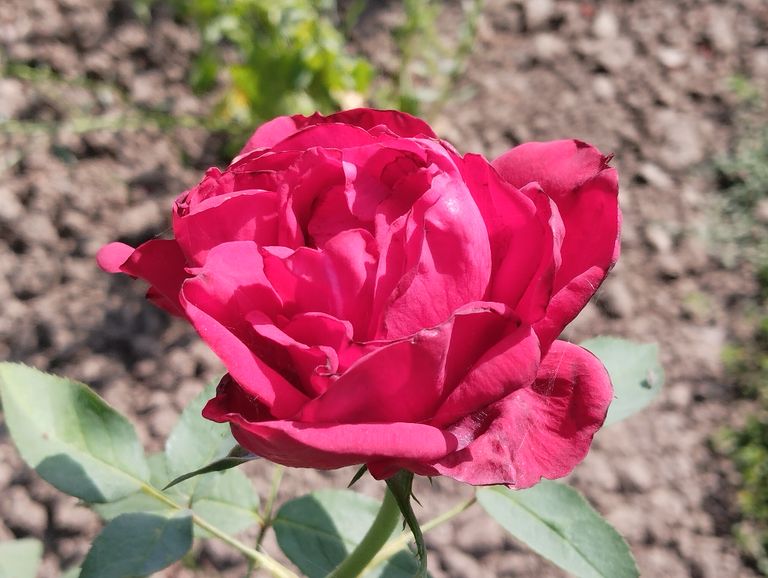
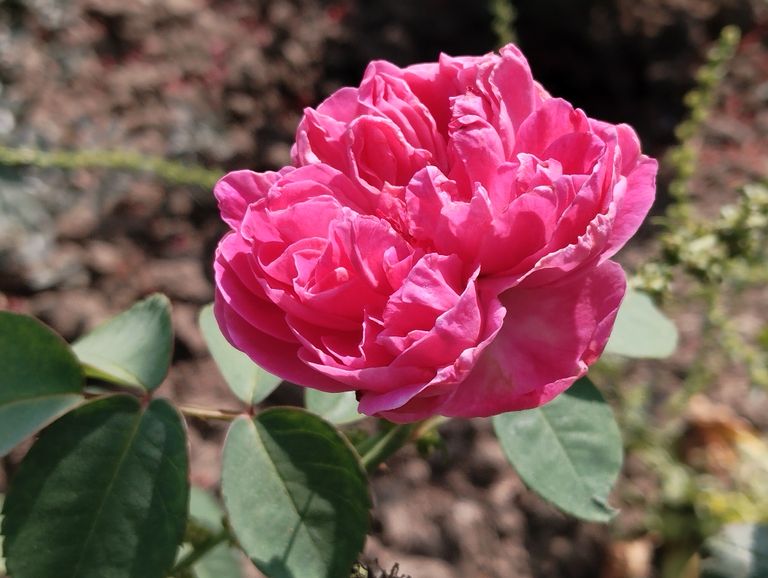
Why Flowers Are Symbols of Love
Flowers have been symbols of love for centuries, transcending cultures and traditions. Their delicate beauty, enchanting fragrance, and vibrant colors evoke deep emotions, making them a timeless expression of love. From ancient mythology to modern romance, flowers have played a crucial role in conveying affection, admiration, and passion. But why have flowers become such a universal symbol of love? In this blog, we will explore the historical, cultural, and emotional significance of flowers in expressing love.
- The Historical Significance of Flowers in Love
Ancient Civilizations and Floral Romance
Flowers have been associated with love since ancient times. In ancient Egypt, Greece, and Rome, flowers were often used in love rituals and ceremonies. The Egyptians adorned their tombs with flowers, believing they symbolized eternal love. The Greeks linked flowers to their gods and goddesses of love, such as Aphrodite, the goddess of beauty and love. In Roman mythology, Venus, the goddess of love, was often depicted with roses, symbolizing passion and desire.
The Victorian Era and the Language of Flowers
During the Victorian era (19th century), people developed a complex "language of flowers" known as floriography. Since expressing emotions openly was considered improper, lovers used flowers to communicate their feelings discreetly. Each flower had a specific meaning. For example:
Red roses symbolized passionate love.
Tulips represented deep devotion.
Lilies signified purity and refined love.
Orchids conveyed rare and exotic beauty.
This tradition of using flowers as a love language continues today, especially on special occasions like Valentine's Day and anniversaries.
- The Emotional Impact of Flowers on Love
Aesthetic Beauty and Attraction
Flowers captivate people with their stunning appearance, much like love itself. Their soft petals, unique shapes, and vibrant colors evoke joy and admiration, making them a perfect symbol of beauty in a romantic relationship.
Fragrance and Memory Connection
The scent of flowers is deeply tied to memory and emotions. Studies have shown that fragrances can trigger nostalgia and enhance positive emotions. The scent of roses, jasmine, or lavender can remind people of a special romantic moment, strengthening the bond between lovers.
Symbol of Growth and Care
Flowers need care, water, and sunlight to bloom, just like love needs effort, patience, and nurturing. A healthy relationship, like a well-tended flower, grows beautifully when given attention and care.
- Cultural and Religious Symbolism of Flowers in Love
Flowers in Eastern Traditions
In India, flowers hold spiritual significance in love and devotion. The lotus, symbolizing purity and divine love, is often associated with Hindu gods like Vishnu and Lakshmi.
In China, peonies, known as the "king of flowers," represent romance and prosperity in marriage.
In Japan, cherry blossoms (sakura) symbolize fleeting beauty and deep emotional connections.
Flowers in Western Traditions
In Christianity, flowers often symbolize divine love. The red rose, in particular, is linked to Christ's sacrifice and deep, unconditional love.
In European folklore, flowers were given to express secret love, especially in times when arranged marriages were common.
- Why Red Roses Became the Ultimate Symbol of Love
Red roses are the most iconic representation of love. This tradition dates back to ancient Greek and Roman times when red roses were linked to Aphrodite and Venus. The red color signifies deep passion and desire, making roses the perfect gift for lovers. Today, red roses remain the most popular choice for romantic occasions like weddings, proposals, and Valentine's Day.
- Flowers in Modern Love and Relationships
Even in today's digital age, flowers remain a timeless gesture of love. People gift flowers for anniversaries, birthdays, and proposals to express their deepest emotions. Online flower delivery services have made it easier than ever to send love across distances. Social media also plays a role in sharing floral gifts and romantic gestures with loved ones.
Conclusion
Flowers are nature’s most beautiful expression of love. Their historical, cultural, and emotional significance makes them a universal symbol of romance and affection. Whether it's a bouquet of roses, a single tulip, or a fragrant jasmine, flowers continue to be the perfect way to say "I love you." So, the next time you want to express your love, let flowers do the talking.
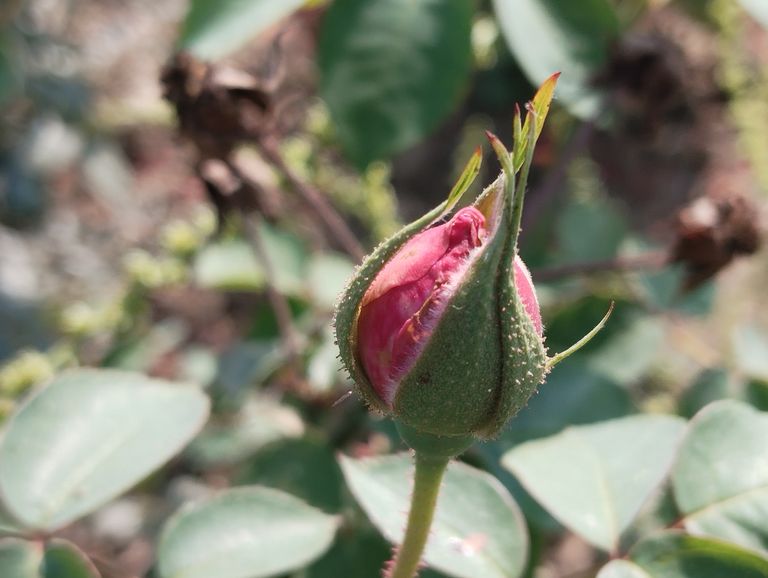
Common Diseases and Pests of Rose Plants: Causes, Symptoms, and Solutions
Roses (Rosa spp.) are among the most beloved flowering plants, admired for their beauty, fragrance, and symbolic meanings. However, they are vulnerable to various diseases and pests that can affect their health and bloom quality. In this blog, we will explore the most common rose diseases, their causes, symptoms, and effective treatment methods to keep your roses thriving.
- Fungal Diseases in Roses
a) Black Spot (Diplocarpon rosae)
Causes: This fungal disease thrives in warm, humid conditions and spreads through water splashes or infected plant debris.
Symptoms:
Circular black or dark brown spots with yellow margins on leaves
Leaves turning yellow and falling prematurely
Weakening of the plant and reduced flowering
Treatment & Prevention:
Remove and destroy infected leaves
Use fungicides like copper-based sprays or neem oil
Water at the base of the plant to avoid wetting the leaves
Ensure proper air circulation by pruning regularly
b) Powdery Mildew (Podosphaera pannosa)
Causes: Powdery mildew is a fungal disease that spreads in warm, dry conditions and is common in poorly ventilated areas.
Symptoms:
White, powdery coating on leaves, buds, and stems
Leaves curling or becoming distorted
Stunted growth and reduced blooming
Treatment & Prevention:
Use sulfur-based or neem oil sprays
Ensure adequate spacing between plants for better airflow
Avoid overhead watering to prevent moisture buildup
c) Rust (Phragmidium spp.)
Causes: Rust is caused by fungal spores that develop in moist conditions and spread through wind and water.
Symptoms:
Orange or reddish-brown pustules on the undersides of leaves
Yellowing and premature dropping of leaves
Weak and stunted plant growth
Treatment & Prevention:
Remove and dispose of infected leaves
Apply organic fungicides such as copper-based sprays
Water early in the morning to allow foliage to dry quickly
- Bacterial Diseases in Roses
a) Crown Gall (Agrobacterium tumefaciens)
Causes: This bacterial infection enters through wounds in the plant, often caused by pruning, pests, or mechanical damage.
Symptoms:
Swollen, tumor-like growths (galls) on stems, roots, or at the base of the plant
Weak, stunted growth and reduced flowering
Treatment & Prevention:
Remove and destroy infected plants
Avoid planting roses in infected soil
Disinfect pruning tools with a bleach solution to prevent spread
b) Bacterial Leaf Spot (Xanthomonas spp.)
Causes: Bacterial leaf spot occurs due to high humidity and spreads through contaminated water and infected plant debris.
Symptoms:
Small, dark brown or black spots with yellow halos on leaves
Leaf curling and defoliation
Treatment & Prevention:
Prune infected leaves and dispose of them properly
Avoid overhead watering and water early in the day
Use copper-based bactericides to control the spread
- Viral Diseases in Roses
a) Rose Mosaic Virus (RMV)
Causes: This virus is transmitted through infected propagation material and can also spread through insect vectors.
Symptoms:
Yellow mosaic patterns or ring spots on leaves
Reduced vigor and stunted growth
Deformed flowers and lower bloom production
Treatment & Prevention:
There is no cure; remove and destroy infected plants
Use virus-free plant material when propagating
Control insect vectors like aphids to prevent transmission
- Common Pests Affecting Roses
a) Aphids
Causes: Aphids are small, soft-bodied insects that feed on rose sap, weakening the plant.
Symptoms:
Sticky, honeydew-like substance on leaves
Distorted, curled leaves
Reduced flower production
Treatment & Prevention:
Spray with neem oil or insecticidal soap
Introduce natural predators like ladybugs
Regularly hose down plants to remove aphids
b) Spider Mites
Causes: These tiny pests thrive in hot, dry conditions and suck plant juices, causing damage.
Symptoms:
Fine webbing on leaves and stems
Yellow, speckled leaves
Leaf drop and weakened plants
Treatment & Prevention:
Spray with neem oil or miticides
Keep plants well-watered to reduce stress
Encourage natural predators like lacewings
c) Japanese Beetles
Causes: These metallic green beetles chew on rose leaves and flowers, causing extensive damage.
Symptoms:
Skeletonized leaves with only veins remaining
Chewed or damaged petals
Weak and stressed plants
Treatment & Prevention:
Handpick beetles and drop them in soapy water
Use pheromone traps to control populations
Apply organic pesticides like neem oil
Conclusion
Keeping your roses healthy requires proper care, regular inspection, and preventive measures. By understanding the common diseases and pests affecting roses, you can take timely action to protect your plants and enjoy vibrant, blooming flowers all season long. If you have any questions or need further advice, feel free to leave a comment below.
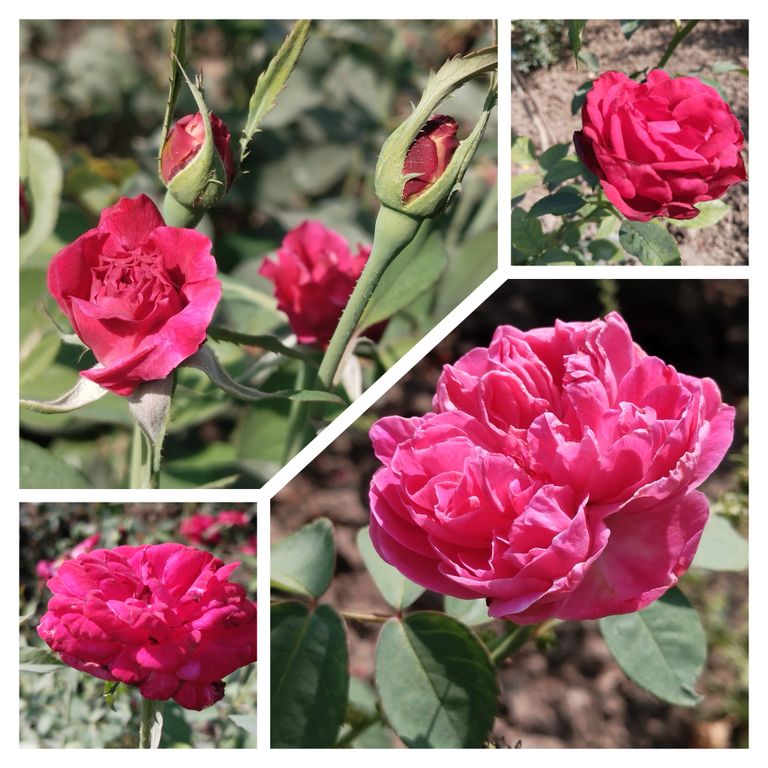
Common Diseases and Pests of Rose Plants: Causes, Symptoms, and Solutions
Roses (Rosa spp.) are among the most beloved flowering plants, admired for their beauty, fragrance, and symbolic meanings. However, they are vulnerable to various diseases and pests that can affect their health and bloom quality. In this blog, we will explore the most common rose diseases, their causes, symptoms, and effective treatment methods to keep your roses thriving.
- Fungal Diseases in Roses
a) Black Spot (Diplocarpon rosae)
Causes: This fungal disease thrives in warm, humid conditions and spreads through water splashes or infected plant debris.
Symptoms:
Circular black or dark brown spots with yellow margins on leaves
Leaves turning yellow and falling prematurely
Weakening of the plant and reduced flowering
Treatment & Prevention:
Remove and destroy infected leaves
Use fungicides like copper-based sprays or neem oil
Water at the base of the plant to avoid wetting the leaves
Ensure proper air circulation by pruning regularly
b) Powdery Mildew (Podosphaera pannosa)
Causes: Powdery mildew is a fungal disease that spreads in warm, dry conditions and is common in poorly ventilated areas.
Symptoms:
White, powdery coating on leaves, buds, and stems
Leaves curling or becoming distorted
Stunted growth and reduced blooming
Treatment & Prevention:
Use sulfur-based or neem oil sprays
Ensure adequate spacing between plants for better airflow
Avoid overhead watering to prevent moisture buildup
c) Rust (Phragmidium spp.)
Causes: Rust is caused by fungal spores that develop in moist conditions and spread through wind and water.
Symptoms:
Orange or reddish-brown pustules on the undersides of leaves
Yellowing and premature dropping of leaves
Weak and stunted plant growth
Treatment & Prevention:
Remove and dispose of infected leaves
Apply organic fungicides such as copper-based sprays
Water early in the morning to allow foliage to dry quickly
- Bacterial Diseases in Roses
a) Crown Gall (Agrobacterium tumefaciens)
Causes: This bacterial infection enters through wounds in the plant, often caused by pruning, pests, or mechanical damage.
Symptoms:
Swollen, tumor-like growths (galls) on stems, roots, or at the base of the plant
Weak, stunted growth and reduced flowering
Treatment & Prevention:
Remove and destroy infected plants
Avoid planting roses in infected soil
Disinfect pruning tools with a bleach solution to prevent spread
b) Bacterial Leaf Spot (Xanthomonas spp.)
Causes: Bacterial leaf spot occurs due to high humidity and spreads through contaminated water and infected plant debris.
Symptoms:
Small, dark brown or black spots with yellow halos on leaves
Leaf curling and defoliation
Treatment & Prevention:
Prune infected leaves and dispose of them properly
Avoid overhead watering and water early in the day
Use copper-based bactericides to control the spread
- Viral Diseases in Roses
a) Rose Mosaic Virus (RMV)
Causes: This virus is transmitted through infected propagation material and can also spread through insect vectors.
Symptoms:
Yellow mosaic patterns or ring spots on leaves
Reduced vigor and stunted growth
Deformed flowers and lower bloom production